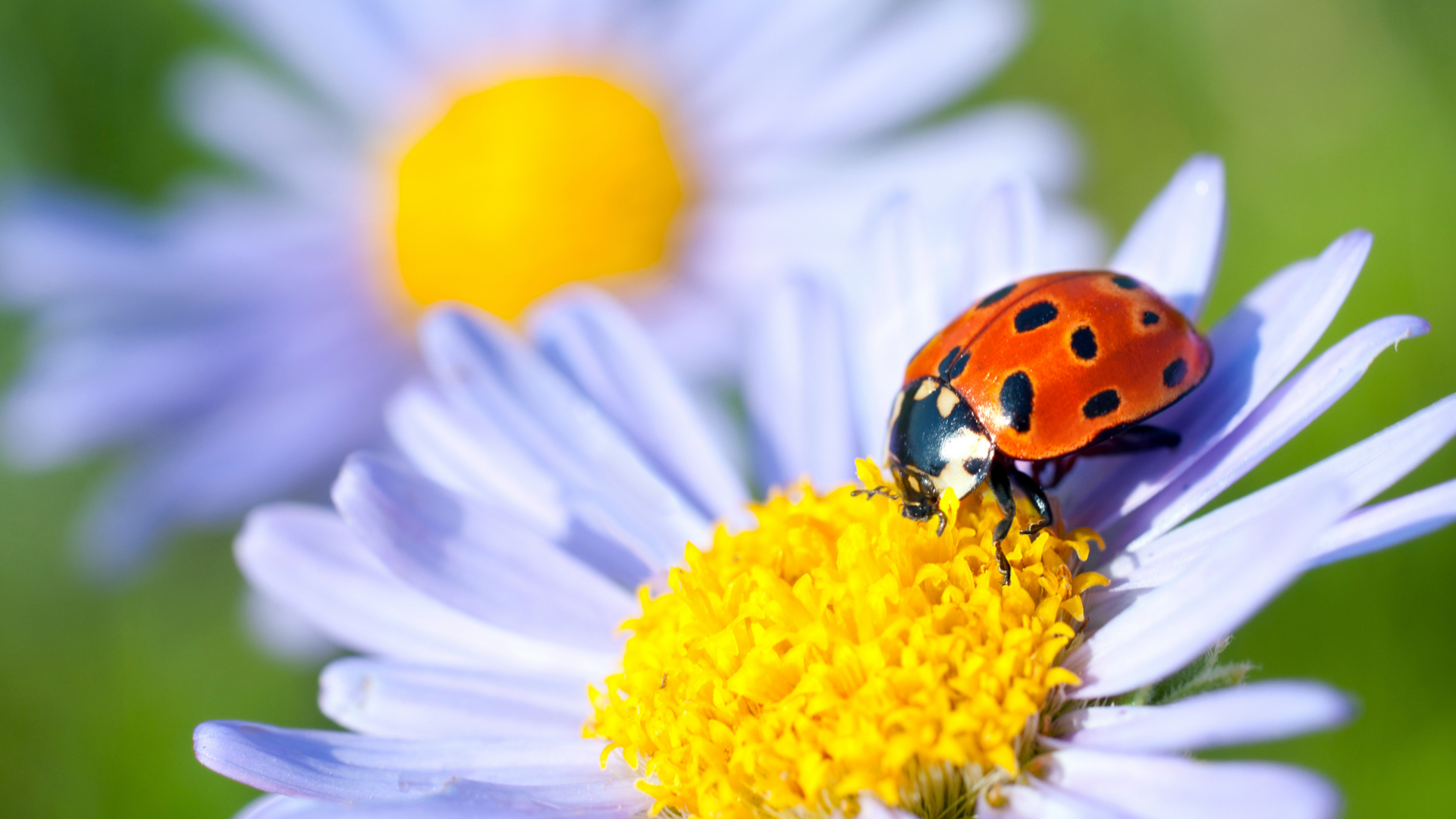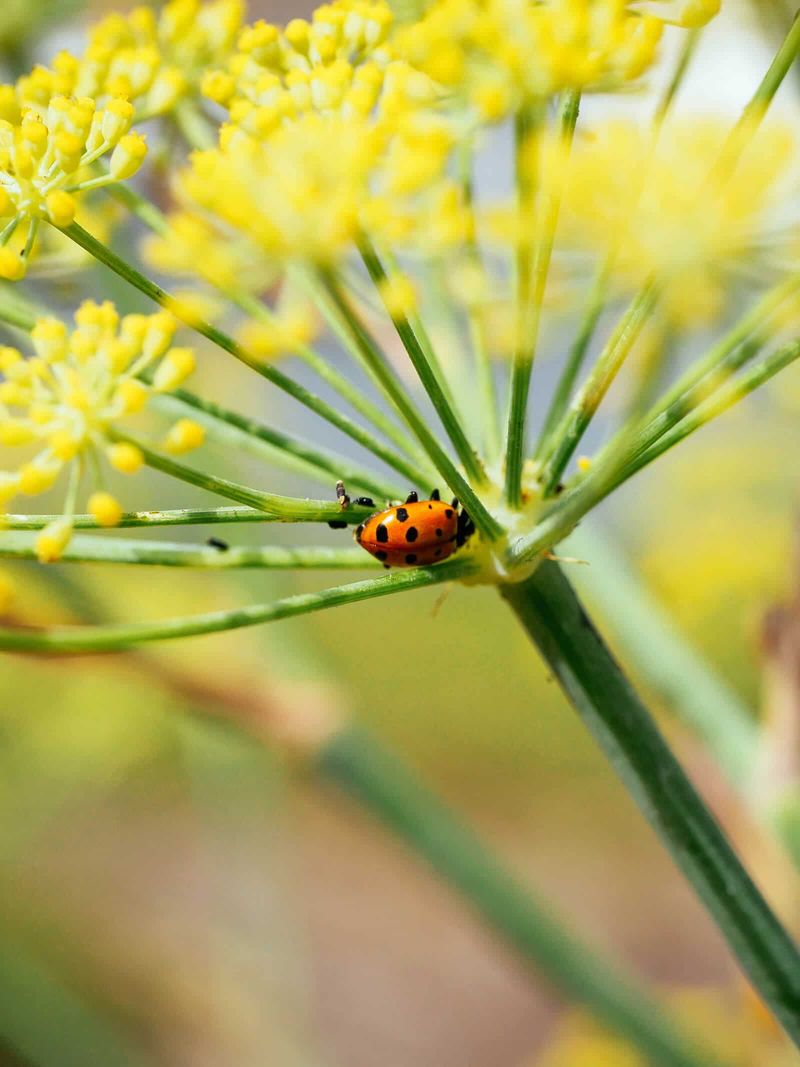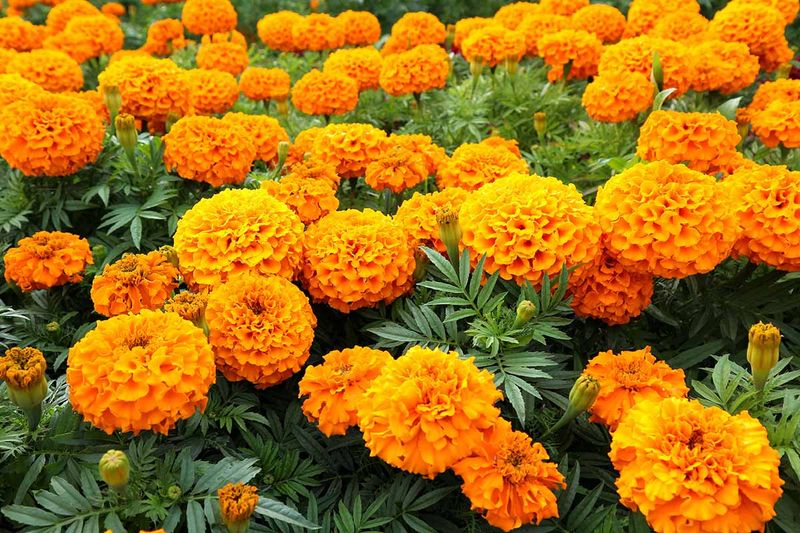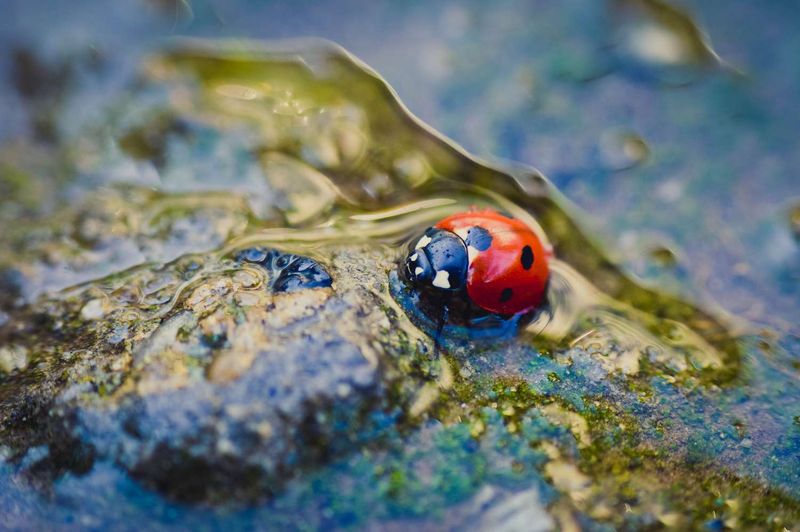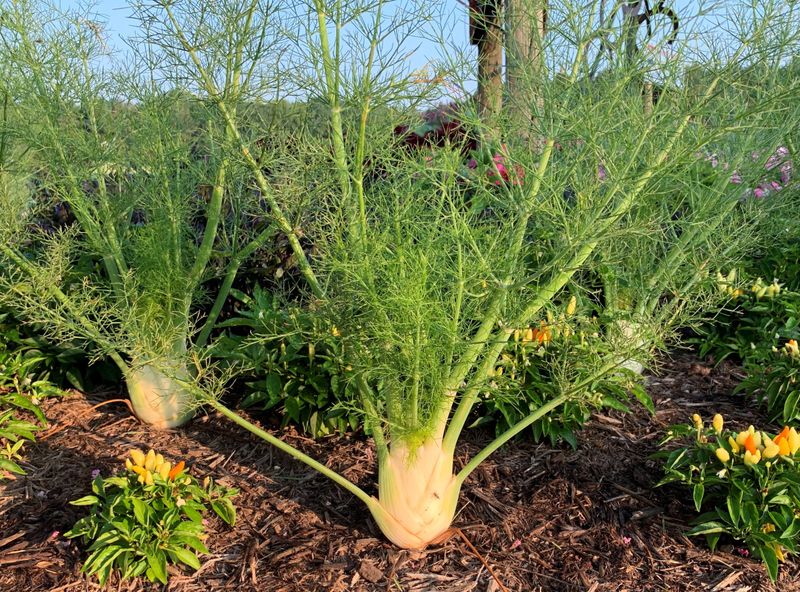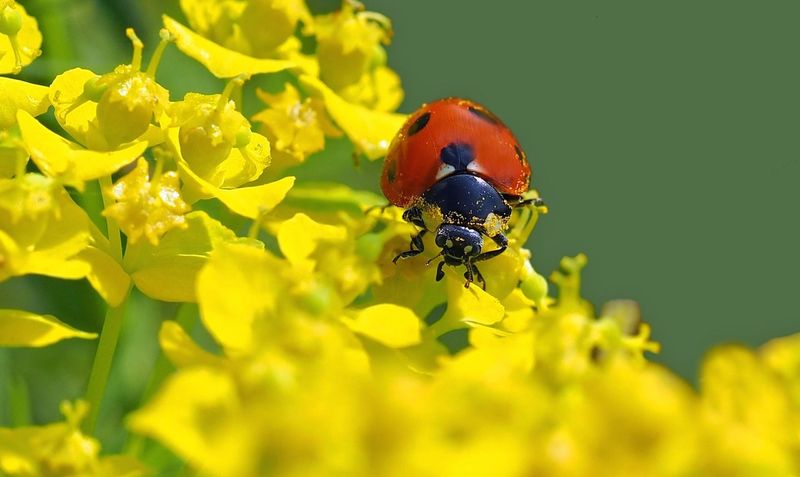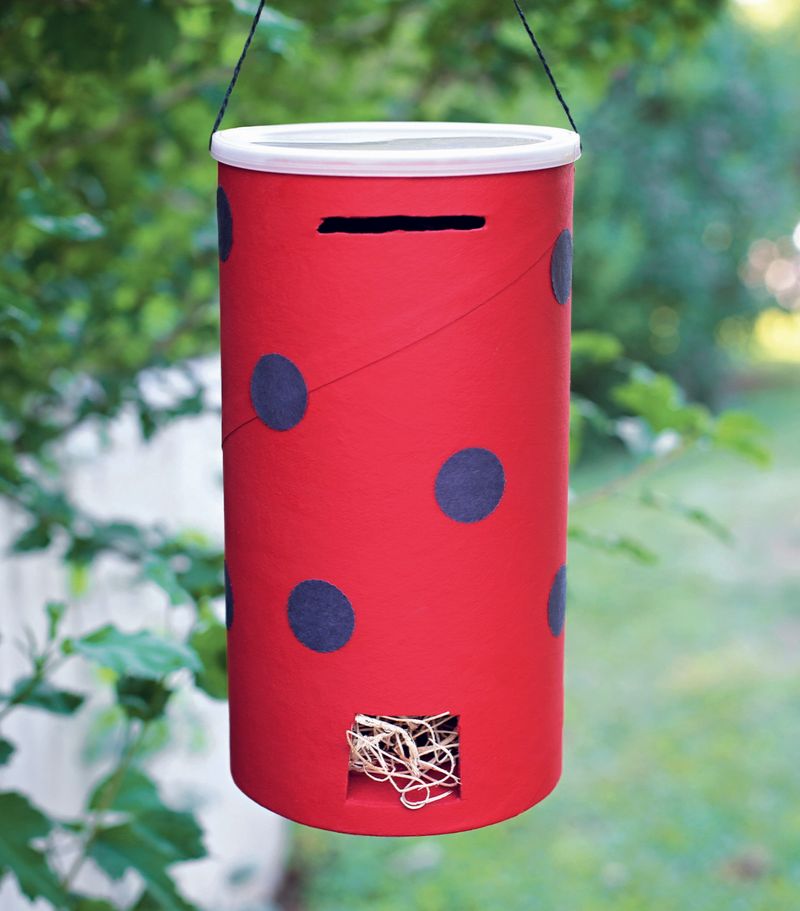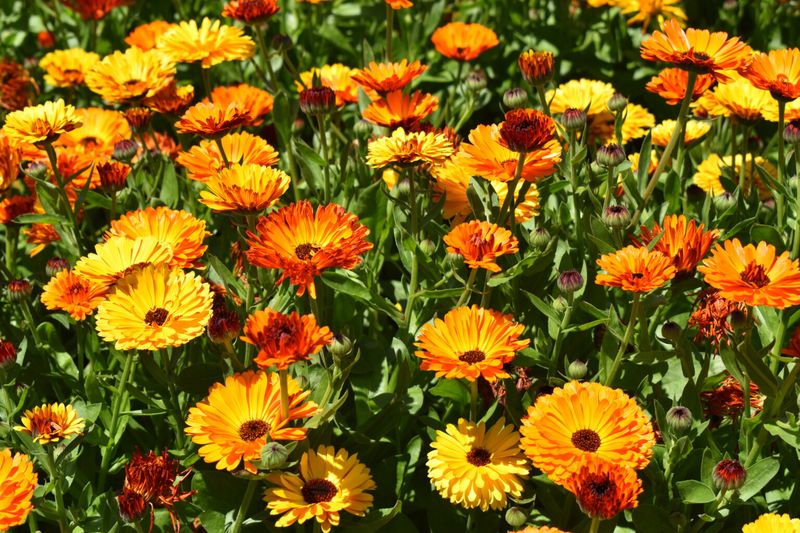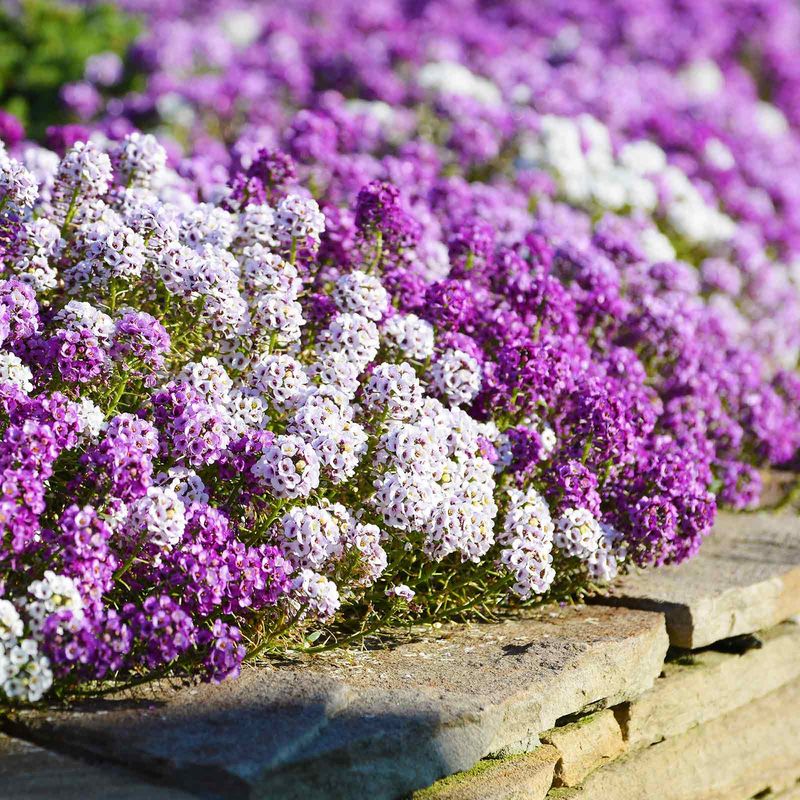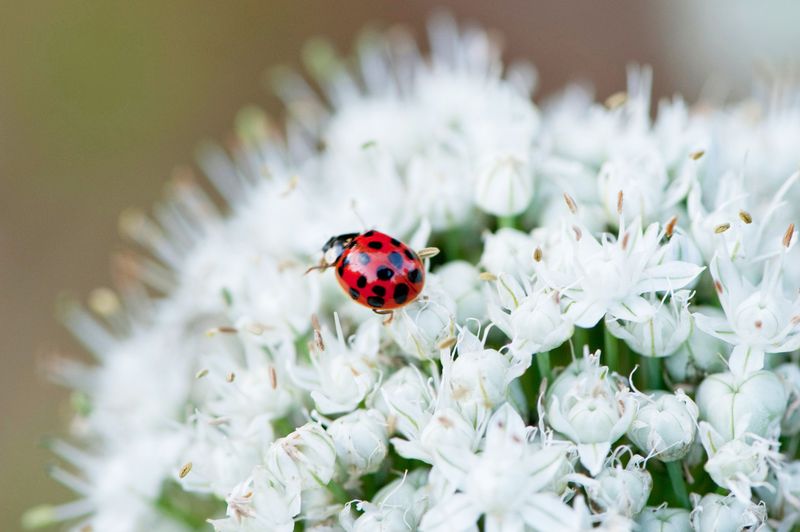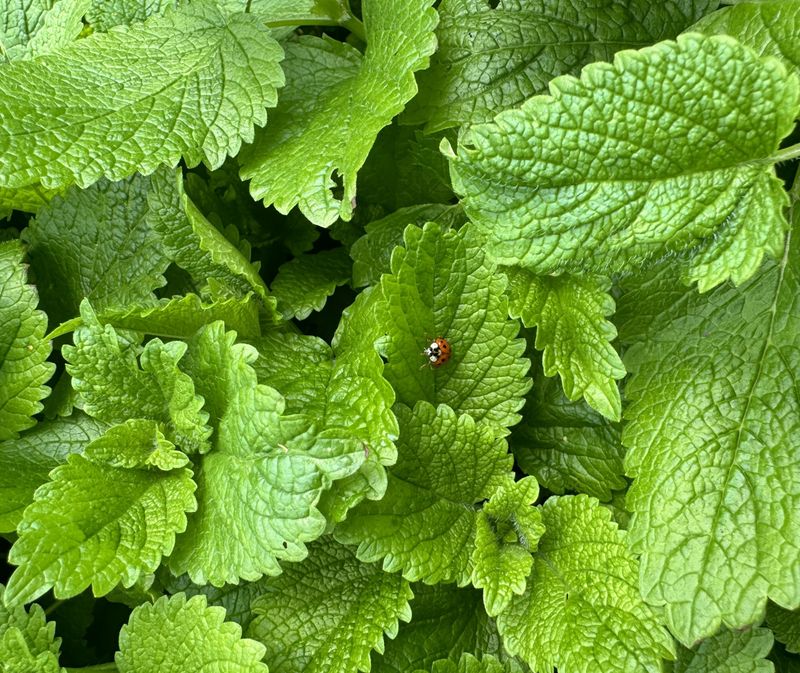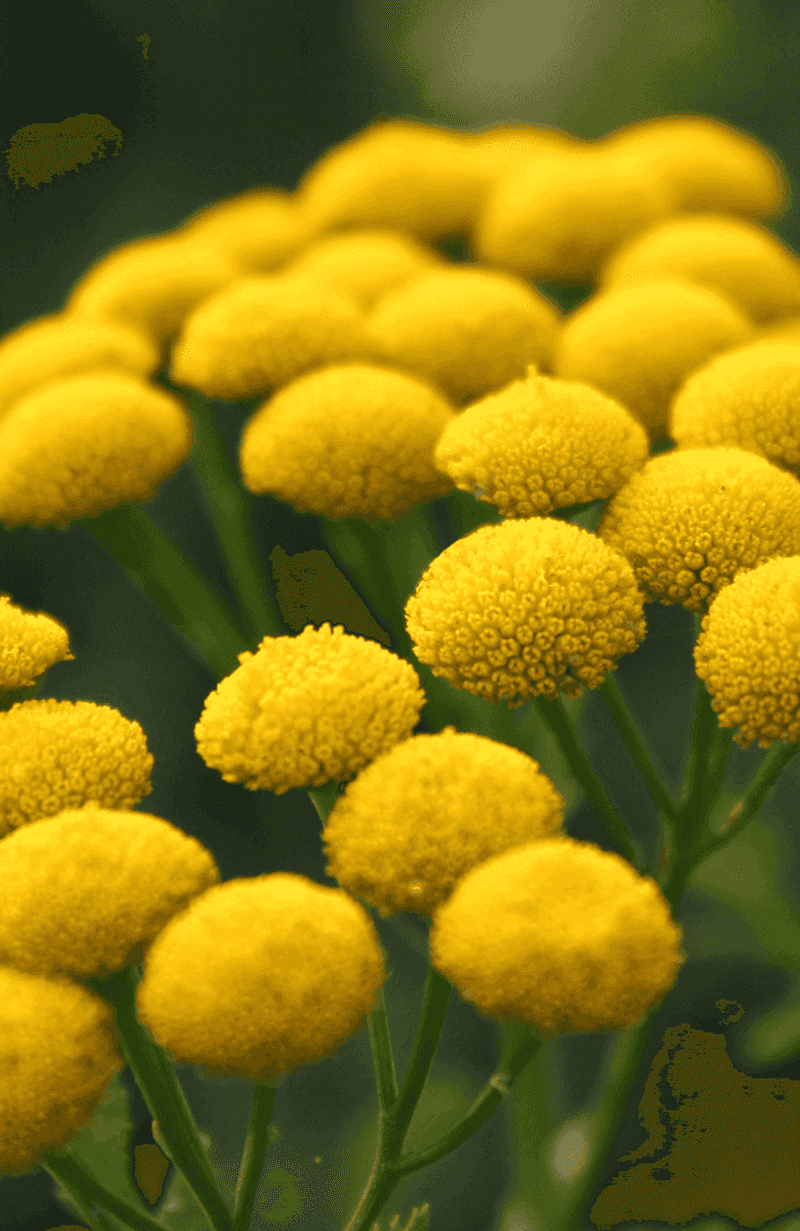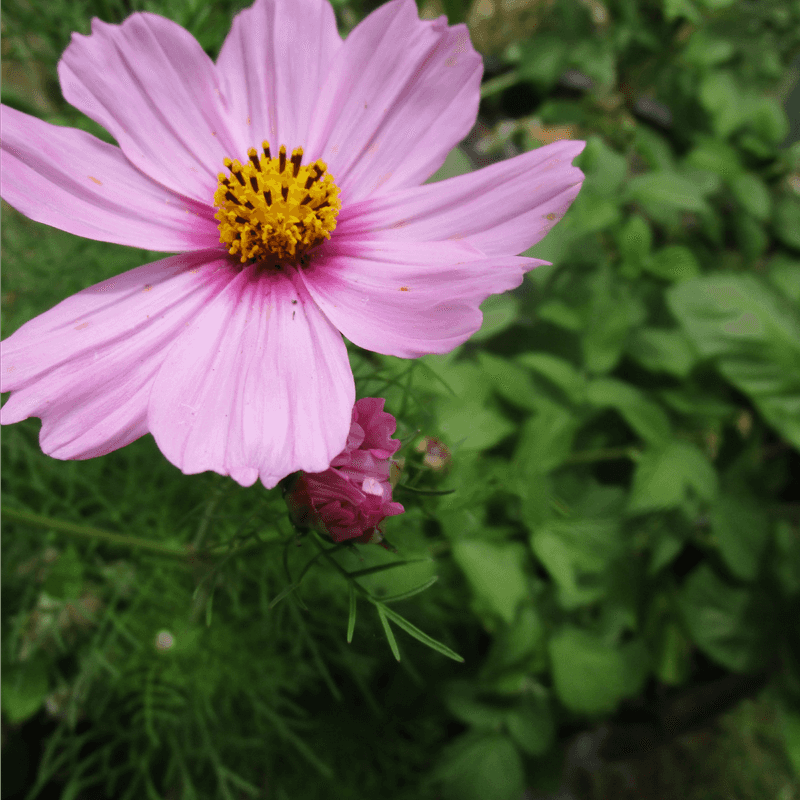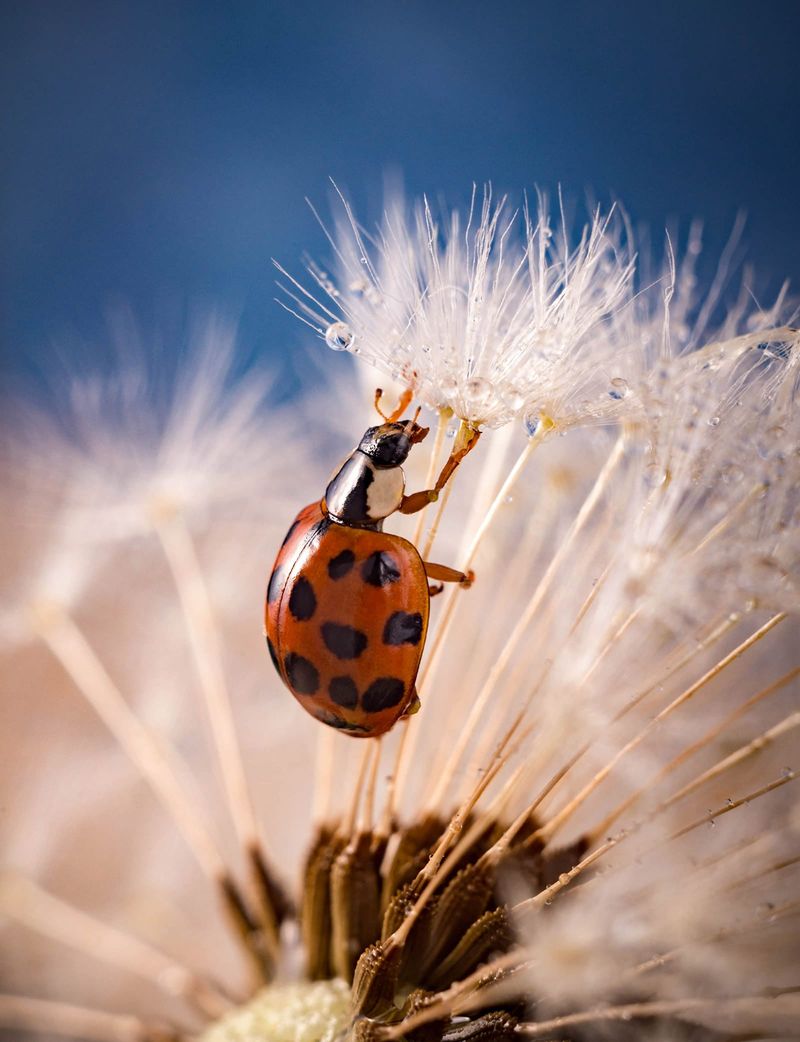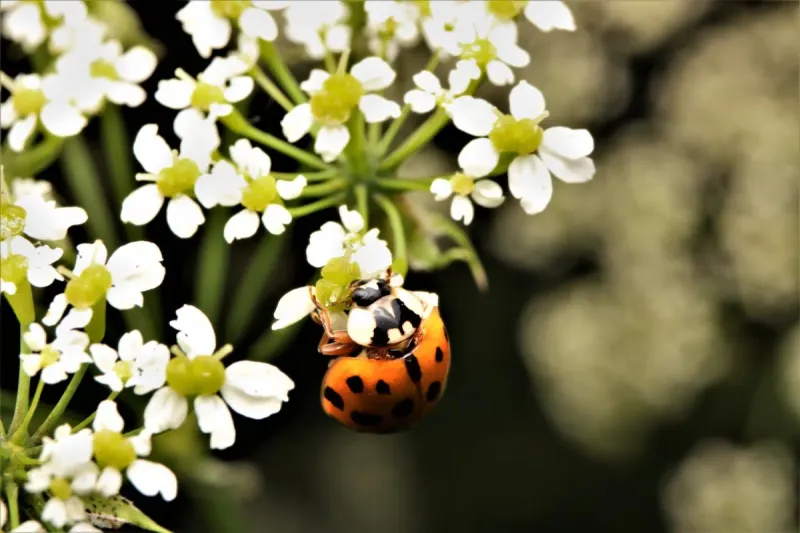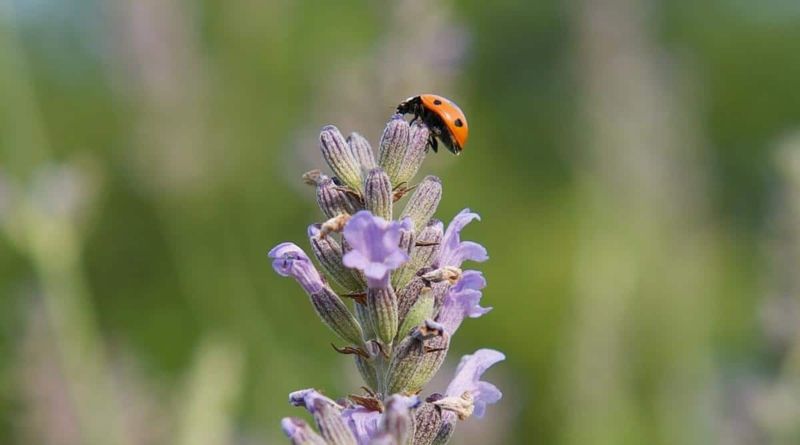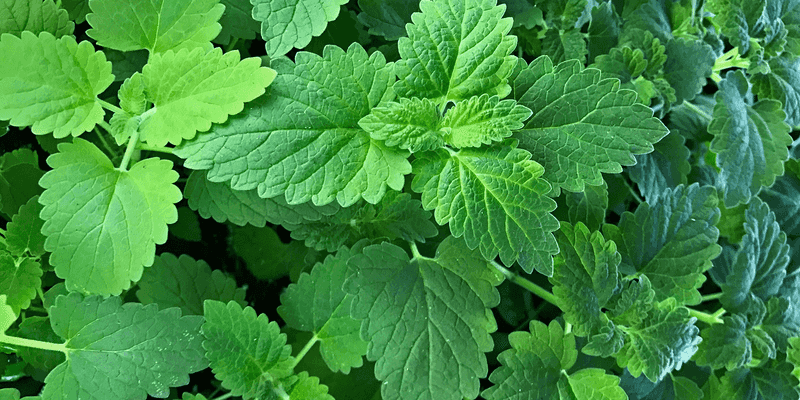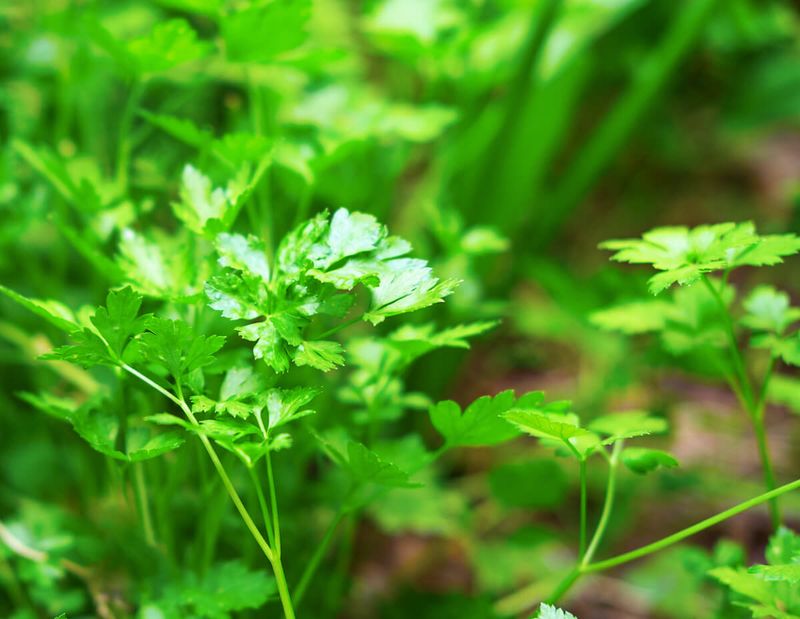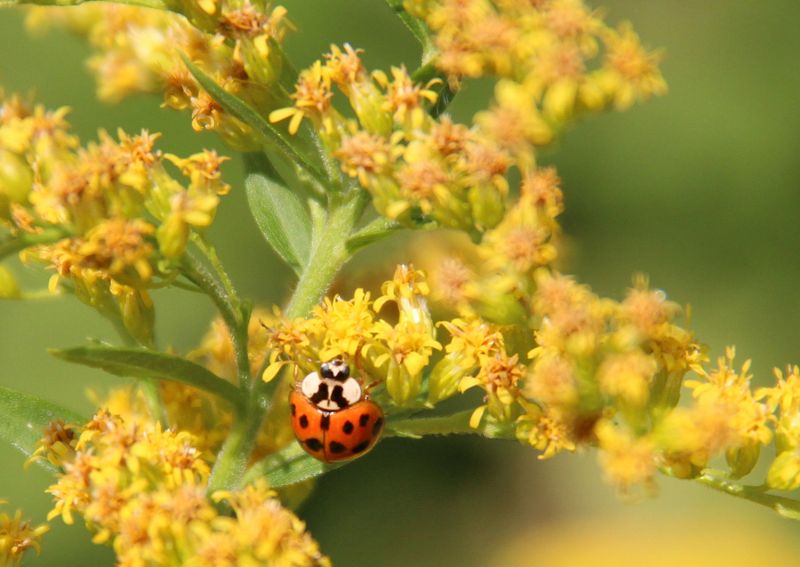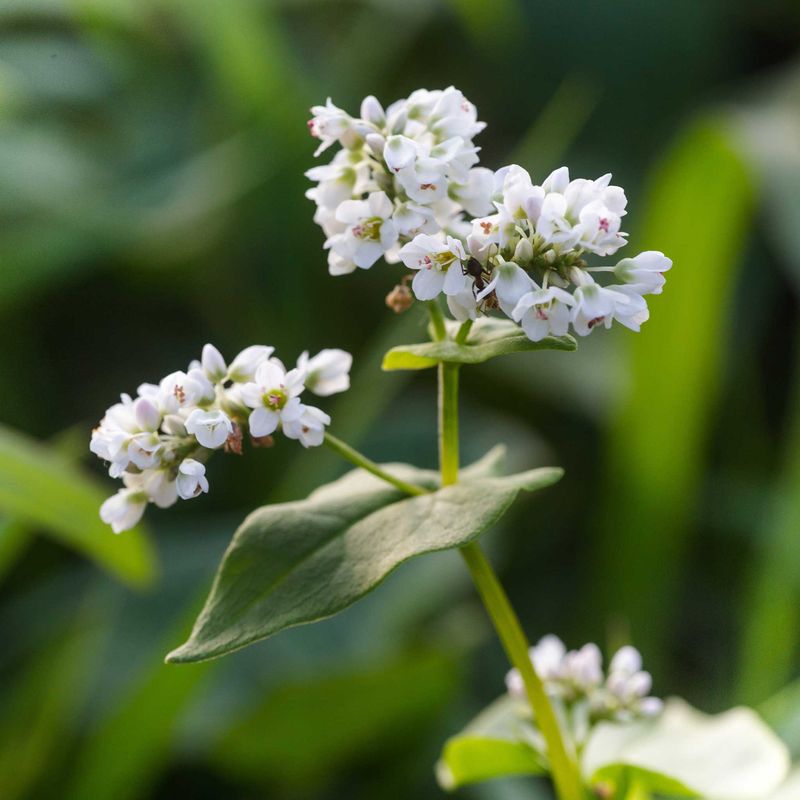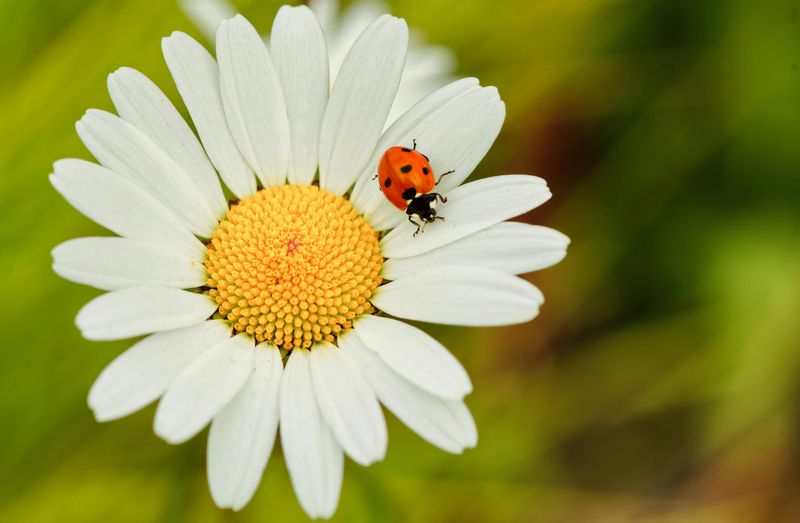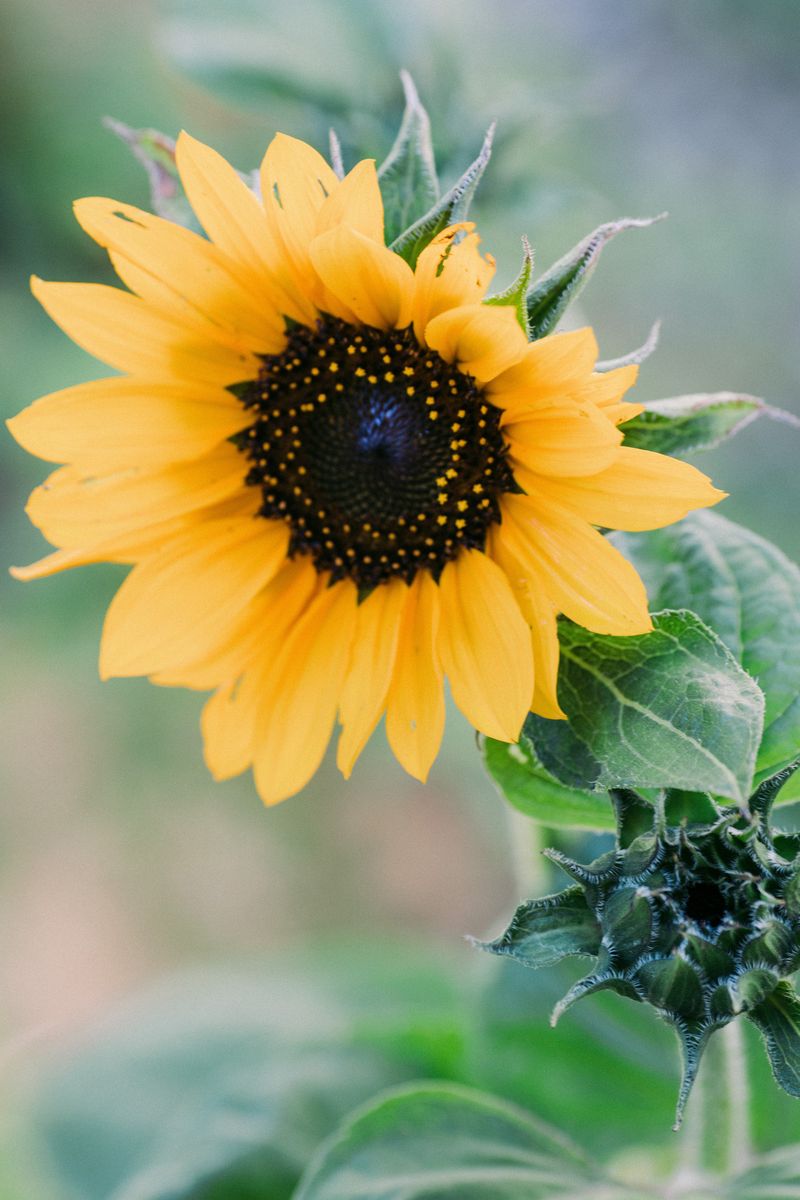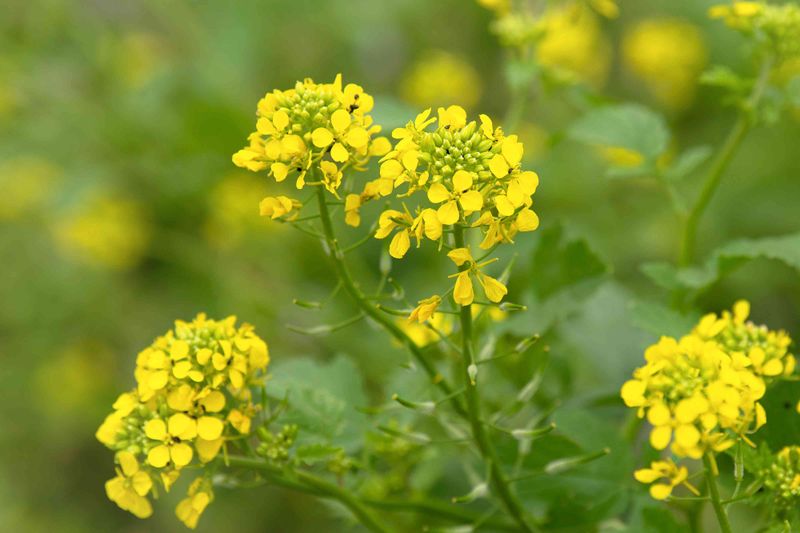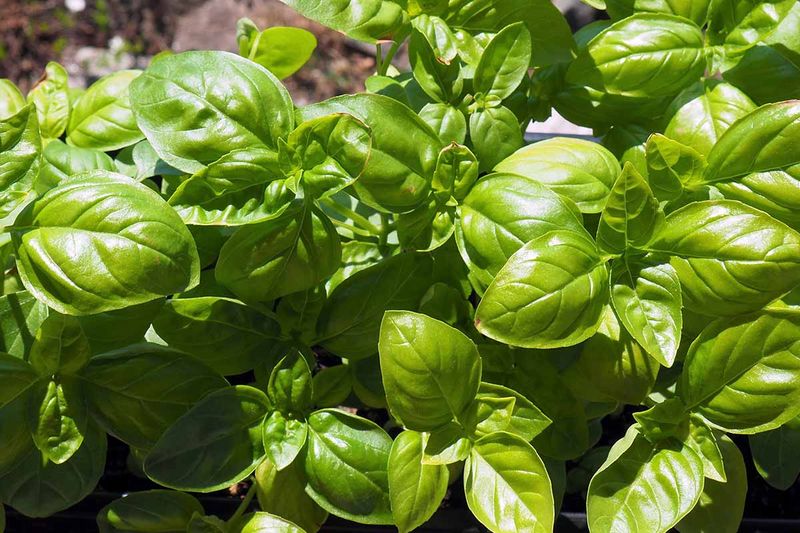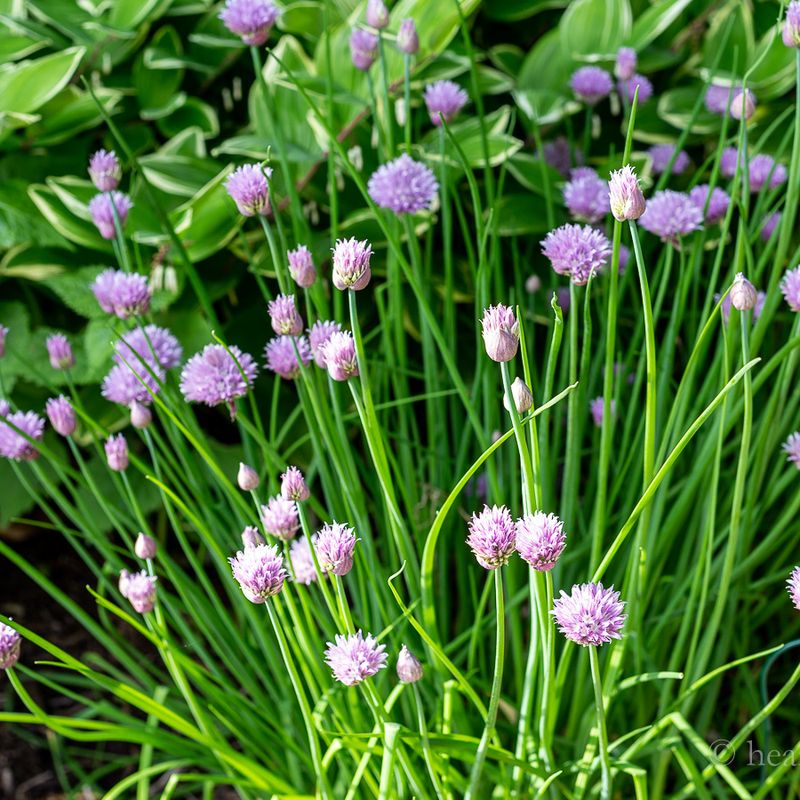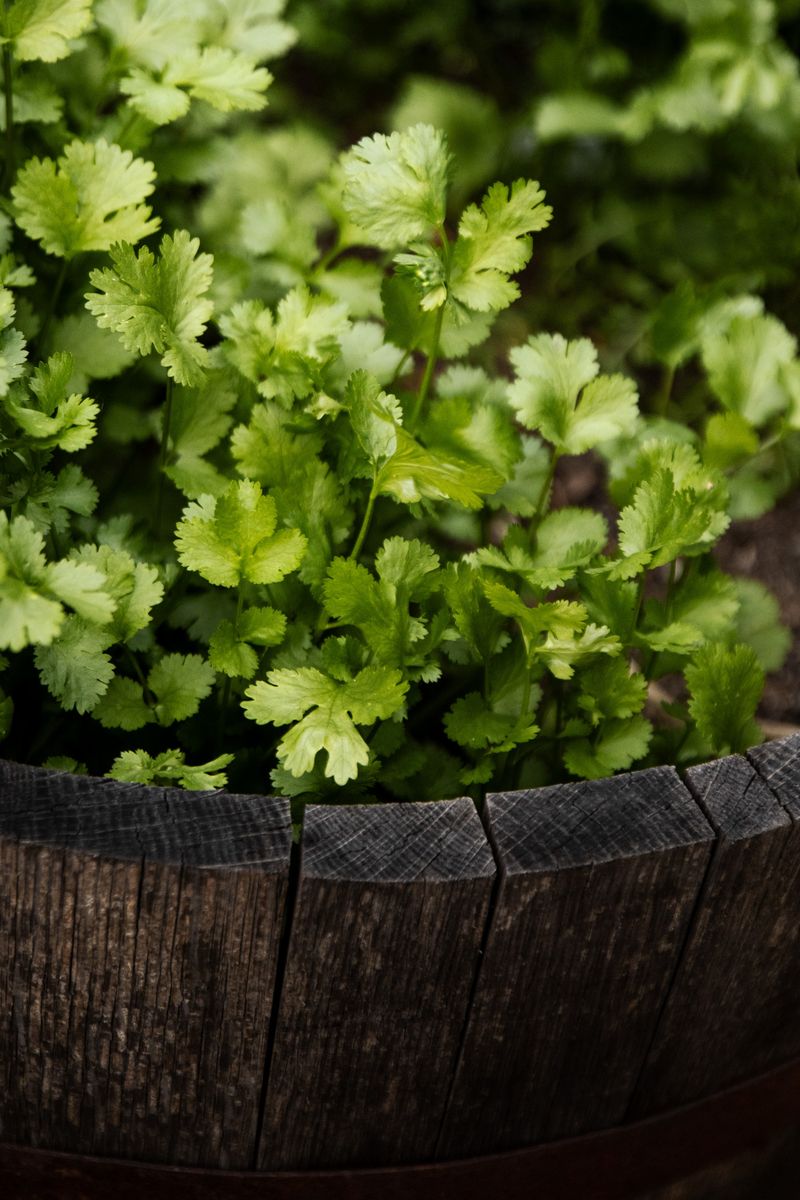Ever wish for a natural way to tackle pests without harsh chemicals? Well, ladybugs are here to save the day! These little beetles are the unsung heroes of pest control.
I’ll never forget the time I saw a ladybug munching away on aphids, and it hit me – nature had already provided the perfect solution.
I’ve gathered 25 easy tips to attract ladybugs to your garden, and trust me, they’re total pros at pest control. It’s a simple, chemical-free way to keep your garden healthy, lively, and pest-free.
1. Grow Dill
Planting this in your garden is like rolling out the red carpet for ladybugs. Dill, with its feathery leaves, entices ladybugs like no other.
Its aromatic foliage isn’t only a culinary delight but also a beacon for these helpful insects. You won’t just enjoy the fresh scent but also the sight of ladybugs feasting on aphids.
Who knew that such a versatile herb could double as a pest control superstar? It’s time to let dill do all the talking in your garden.
2. Introduce Marigolds
This bright flower isn’t just a pretty face; it’s a ladybug magnet! Marigolds are known to attract ladybugs due to their particular scent.
The bold colors aren’t merely for show; they act as a welcoming signal for ladybugs. Placing them around your garden beds can keep pests at bay.
Imagine a garden where beauty meets function, as these flowers light up your garden while naturally inviting in ladybugs. It’s one of the simplest ways to encourage these beetles to visit.
3. Provide Water Source
Sometimes, all it takes is a little splash. Ladybugs need water, just like us, and a small shallow dish filled with water can make all the difference.
Placing a few stones in the dish allows them to drink without the risk of drowning. This simple step can transform your garden into a ladybug haven.
It’s both a practical garden feature and an elegant water oasis for these thirsty beetles. Watch as they gather, sip, and thrive in your garden.
4. Include Fennel
Tall and gracious, this plant adds more than just height to your garden. Fennel attracts ladybugs with its umbrella-like clusters of yellow flowers.
These flowers are particularly appealing to ladybugs seeking pollen and nectar. While you enjoy its licorice-flavored stalks, ladybugs appreciate the buffet of tiny pests.
It’s a win-win situation where both humans and insects find joy. Consider adding fennel if you’re looking for a plant that offers beauty and purpose.
5. Plant Yarrow
I used to overlook yarrow as just another wildflower, but once I planted it, I quickly realized it was a ladybug favorite!
The flat-topped clusters are perfect landing pads for these little beetles, and soon enough, my garden was full of them. They loved the pollen and helped keep aphids at bay.
Since adding yarrow, my garden has had fewer pests and more blooms. It’s not just a pretty flower, it’s a garden’s best friend, offering both beauty and natural pest control all in one!
6. Create a Ladybug House
Ever thought of giving ladybugs a place to call home? A ladybug house, complete with small entry holes, provides shelter and security.
Position it near your flowering plants, and watch as it becomes a cozy haven. This small structure not only beautifies your garden but also encourages ladybugs to stick around.
It’s like offering them a bed and breakfast, ensuring they have all they need. Who knew a little house could make such a difference in ladybug attraction?
7. Grow Calendula
This sunny bloom is more than just an eye-catcher. Calendula attracts ladybugs with its bright, inviting petals. Adding this cheerful flower to your garden can turn it into a ladybug paradise.
As they feed on pests, you’ll enjoy the colors that calendula brings. It’s a dual-purpose plant that benefits both gardener and insect.
Let this flower add charm and utility as it draws in those beneficial beetles. Calendula is truly a gardener’s ally in pest control.
8. Grow Alyssum
Small but mighty, this flowering plant offers more than aesthetic appeal. Alyssum attracts ladybugs by providing ample nectar.
Its tiny blossoms are perfect for ladybugs searching for a sweet treat. Not only does alyssum offer beauty, but it also plays a crucial role in pest management.
Incorporating these flowers can enhance your garden’s ecosystem. With alyssum, you’re not just planting flowers; you’re creating a welcoming environment for ladybugs.
9. Plant Angelica
If you’re looking for a garden hero, look no further than angelica! This herb is a ladybug magnet, with its tall stems and umbrella-shaped flowers drawing these beetles in for shelter and food.
Not only does it add a lovely aroma and flavor to your kitchen, but it also provides the perfect environment for ladybugs to thrive.
As you enjoy its culinary uses, the ladybugs will be busy tackling pests. Adding angelica to your garden is like having a secret weapon for natural pest control.
10. Interplant Coriander
This culinary staple isn’t just for your kitchen. Coriander, with its delicate leaves, proves to be a ladybug favorite.
By interplanting it with your vegetables, you’ll see an increase in ladybug activity. Its small white flowers offer both nectar and pollen.
This plant creates a dynamic duo of flavor and function. Enjoy fresh coriander while letting ladybugs keep pests at bay. It’s a natural partnership that benefits you and your garden ecosystem.
11. Cultivate Tansy
Tansy might look like a bunch of tiny yellow buttons, but to ladybugs, it’s pure paradise! These little flowers are packed with pollen and nectar, making them the perfect snack for ladybugs.
When I added tansy to my garden, I noticed an immediate increase in ladybug activity. Not only does it bring a splash of yellow beauty, but it also plays a major role in keeping pests at bay.
Tansy has quickly become a must-have in my garden for its pest-fighting powers and its ability to attract those helpful little beetles!
12. Grow Cosmos
These flowers seem to come from another world, and ladybugs agree! Cosmos petals are a sight to behold. They offer ladybugs a place to feast on pollen.
These blooms aren’t just for show; they’re a staple in any ladybug-friendly garden. As you enjoy their ethereal beauty, ladybugs get to work.
Cosmos bridge the gap between aesthetics and functional gardening. Plant cosmos to create a balance of beauty and pest control.
13. Add Dandelions
Often overlooked as mere weeds, these yellow flowers have a hidden appeal. Dandelions provide early-season nourishment for ladybugs.
Their presence in your garden can mark the beginning of a pest-free zone. While others dismiss them, ladybugs see them as the first buffet of the year.
Letting dandelions grow can attract these beetles, aiding in natural pest control. Who knew that what some call a nuisance could be such a benefit? Dandelions are more than just weeds.
14. Cultivate Caraway
Caraway isn’t just a spice, it’s also a ladybug magnet! I was surprised when I noticed ladybugs swarming around the feathery leaves and delicate flowers of my caraway plant.
Not only does it add a lovely aroma to my garden, but it also provides the perfect habitat for these helpful beetles.
As they feast on pests, I get to enjoy the added bonus of flavoring my dishes. Caraway is one of those plants that does double duty. It boosts both the taste of your meals and the health of your garden!
15. Plant Lavender
Known for its relaxing scent, this plant offers something more. Lavender’s aromatic flowers aren’t just for humans; ladybugs love them too.
Adding lavender to your garden can create a peaceful atmosphere while attracting these helpful beetles. Its calming influence extends beyond humans, making it a ladybug favorite.
Incorporating this plant means more ladybugs and fewer pests. Lavender’s dual role in beauty and function makes it a must-have in any garden.
16. Introduce Catnip
While the cats might be thrilled, ladybugs have their reasons to love this plant too. Catnip, with its minty aroma, has a way of drawing in these beetles.
Its white flowers offer the nectar ladybugs crave. Adding catnip can simultaneously amuse your feline friends and enhance your garden’s natural pest control.
It’s a delightful twist where playtime and practicality intersect. Who knew that catnip could serve double duty as a ladybug attractor?
17. Interplant Parsley
Parsley isn’t just for garnishing your meals anymore. This herb, with its rich foliage, creates a welcoming environment for ladybugs.
Its flowers serve as a nectar source, encouraging ladybugs to linger. By interplanting parsley, you’re getting more than a culinary herb.
You’re establishing a mini ecosystem that supports natural pest control. It’s a blend of flavor and functionality. Let parsley do the work, both in the kitchen and the garden.
18. Cultivate Goldenrod
This plant stands tall and proud, offering more than just golden hues. Goldenrod attracts ladybugs by providing essential pollen and nectar.
Its presence can lead to a flourishing ladybug population. While the tall stalks add structure to your garden, the benefits go beyond aesthetics.
Goldenrod is a key player in maintaining a healthy garden ecosystem. It’s one of those plants that silently work wonders, supporting both beauty and biodiversity.
19. Grow Buckwheat
Often overlooked, this crop has secret advantages. Buckwheat offers a rich source of nectar, attracting ladybugs and other beneficial insects.
Its rapid growth can quickly turn your garden into a ladybug haven. Beyond its agricultural benefits, buckwheat enhances soil quality.
The flowers might be small, but their impact is significant, both for attracting ladybugs and improving your garden. Planting buckwheat can be your garden’s unexpected ally in pest control.
20. Add Chamomile
Chamomile isn’t just perfect for tea, it’s also a ladybug magnet! I added chamomile to my garden and quickly noticed ladybugs flocking to its flowers.
They love the pollen and nectar, and in return, they help keep pests in check. While I relax with a cup of chamomile tea, these little beetles are busy doing their job.
Chamomile is the ultimate multi-tasker, offering both relaxation for me and natural pest control for my garden.
21. Plant Sunflowers
These giants of the garden offer more than just sunny dispositions. Sunflowers provide ladybugs with a high perch to find their dinner.
Their large blooms are a beacon for ladybugs looking for pests to consume. Incorporating sunflowers can enhance the beauty and functionality of your garden.
They serve as nature’s lookout towers for ladybugs. Sunflowers are a testament to how towering beauty can bring practical benefits. They’re more than just eye-catching; they’re ladybug-friendly.
22. Cultivate Mustard
This plant might be known for its culinary kick, but it’s also a ladybug favorite. Mustard’s yellow flowers attract ladybugs by offering nectar and pollen.
Growing mustard can lead to increased ladybug activity, reducing garden pests. While its tangy leaves spice up your dishes, they also support beneficial insects.
Mustard is a powerhouse in both kitchen and garden. It’s a plant that proves its worth by enhancing flavors and fostering a healthy garden environment.
23. Grow Basil
This herb isn’t just for pesto anymore. Basil’s aromatic leaves and small flowers provide an inviting habitat for ladybugs. By planting basil, you’ll enjoy both culinary delights and natural pest management.
The combination of fragrance and function makes basil a garden essential. Its role extends beyond the kitchen, offering a helping hand in pest control.
Basil is one of those herbs that truly does it all, from flavoring your meals to attracting beneficial beetles.
24. Interplant Chives
These spiky green stalks hold more than just flavor potential. Chives produce purple blossoms that ladybugs adore.
By interplanting chives in your garden, you create a thriving environment for these beetles. Their presence means fewer pests and more beauty.
While you enjoy their oniony flavor, ladybugs appreciate the sustenance. Chives are a win-win for both the garden and the kitchen. They’re a simple yet effective way to support your garden ecosystem.
25. Incorporate Cilantro
This herb adds more than zest to your salsa. Cilantro, with its lacy leaves, is a ladybug’s paradise. The plant’s small flowers provide ample nectar, encouraging ladybug visits.
Incorporating cilantro means you get fresh herbs and natural pest control. It’s a harmonious blend of culinary and gardening benefits.
With cilantro, you’re not just growing herbs; you’re fostering a balanced ecosystem. This plant proves that flavor and function can go hand in hand.

